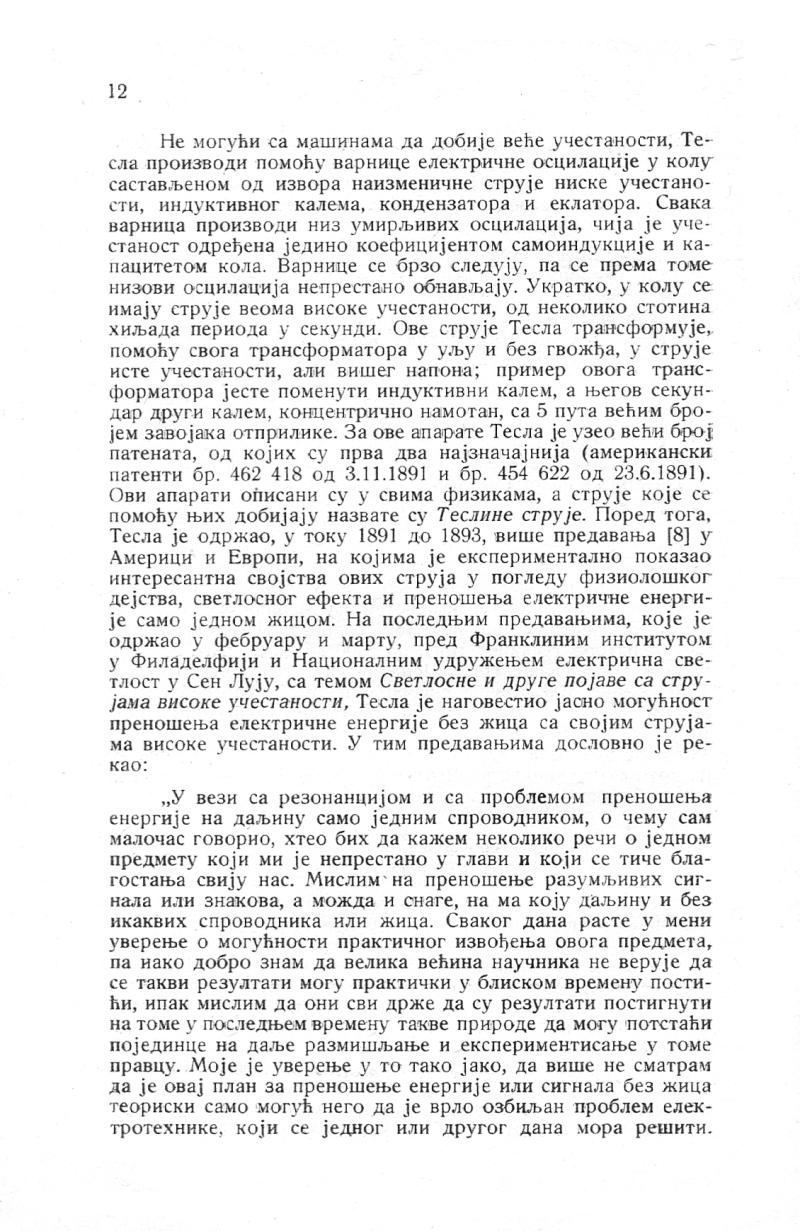
Nikola Tesla Books
Unable to achieve higher frequencies with machines, Tesla generates electric oscillations using a spark gap circuit composed of a source of alternating current of low frequency, an inductive coil, a capacitor, and an oscillator. Each spark produces a series of damped oscillations, the frequency of which is determined solely by the coefficient of self-induction and the capacitance of the circuit. The sparks follow each other rapidly, continuously renewing the series of oscillations. In short, the circuit generates very high-frequency currents, reaching several hundred thousand periods per second. Tesla transforms these currents using his oil-immersed, iron-free transformer into currents of the same frequency but higher voltage. An example of such a transformer is the mentioned inductive coil, with its secondary winding, concentrically wound, having approximately five times more turns. Tesla obtained multiple patents for these devices, with the first two being the most significant (U.S. Patents No. 462 418 dated November 3, 1891, and No. 454 622 dated June 23, 1891). These devices are described in various physics journals, and the currents obtained through them are referred to as Teslaâs Currents. In addition, Tesla delivered several lectures [8] between 1891 and 1893 in both America and Europe, where he experimentally demonstrated the interesting properties of these currents in terms of physiological effects, luminous effects, and the transmission of electrical energy through a single wire. In his last lectures, held in February and March, in front of the Franklin Institute in Philadelphia and the National Electric Light Association in St. Louis, on the topic of Luminous and Other Phenomena Produced by High-Frequency Currents, Tesla hinted at the possibility of transmitting electrical energy without wires with his high-frequency currents. In these lectures, he stated:
âIn connection with resonance and the problem of transmitting energy at a distance with only one conductor, about which I spoke a little while ago, I would like to say a few words on a subject that is constantly in my mind and that challenges the interest of all of us. I am thinking of the transmission of intelligible signals or perhaps even power to any distance without the use of wires. Every day strengthens my belief in the feasibility of such an achievement, and while I know that the majority of scientists think otherwise, I still believe that the results achieved in recent times are such as to encourage individuals to further contemplation and experimentation in that direction. My conviction in this is so strong that I no longer consider this plan for the transmission of energy or signals without wires as merely theoretically possible but as a serious problem in electrical engineering, which must be solved sooner or later.
